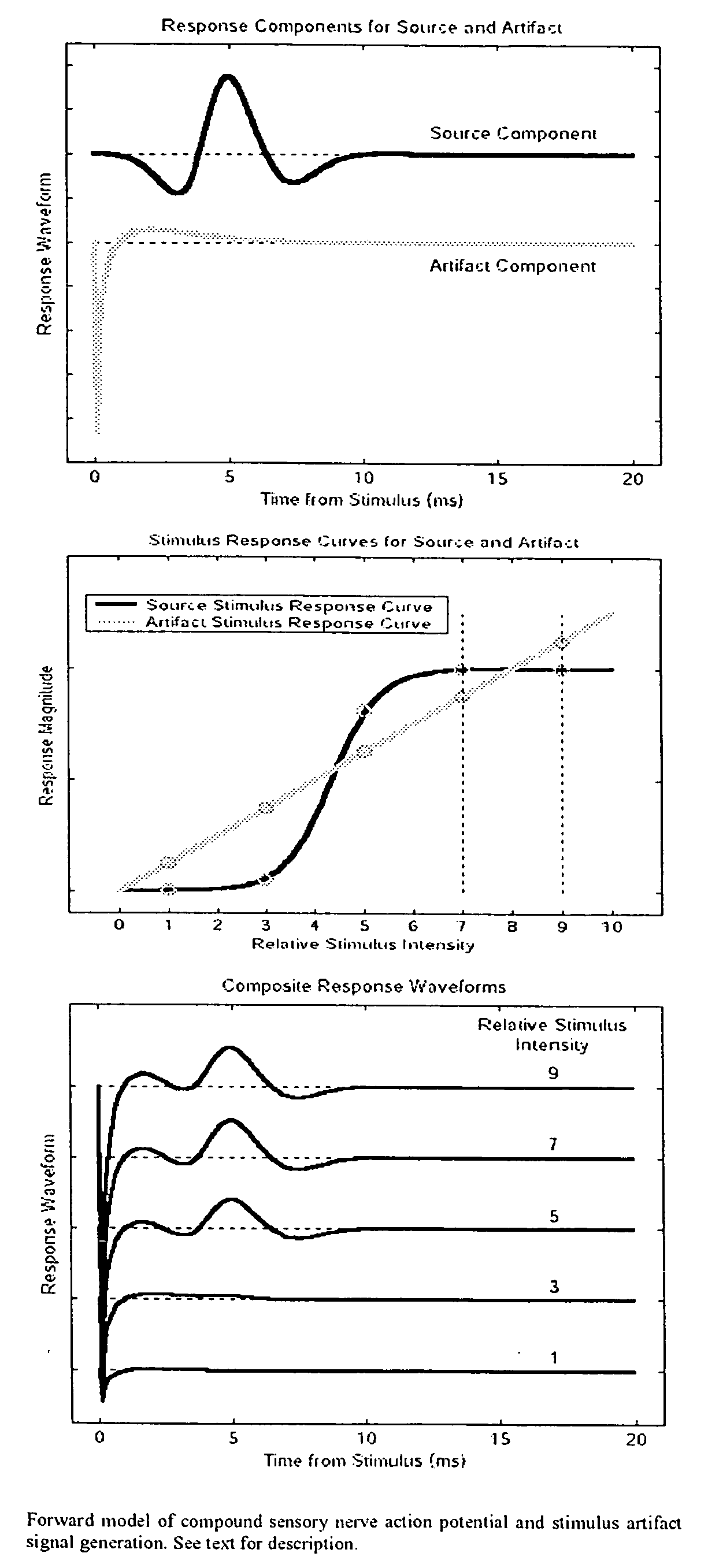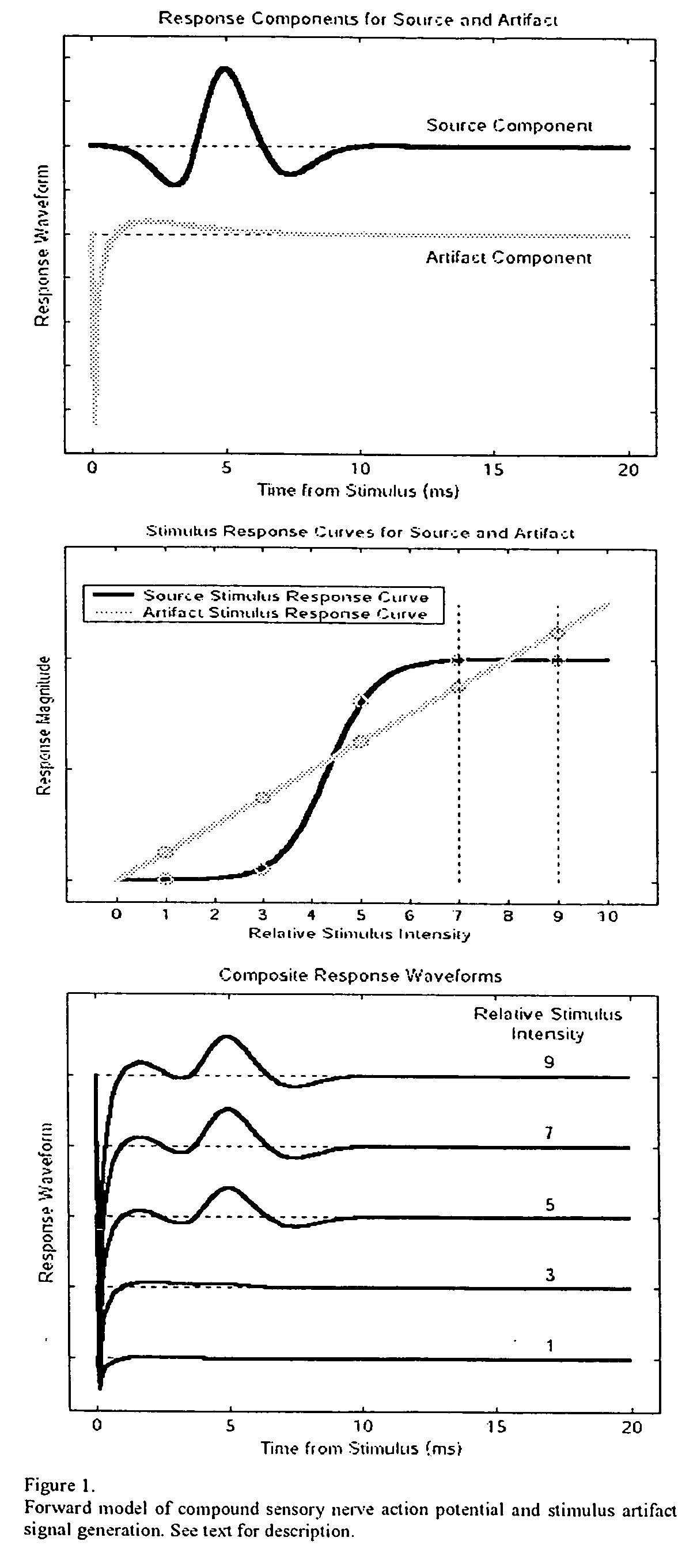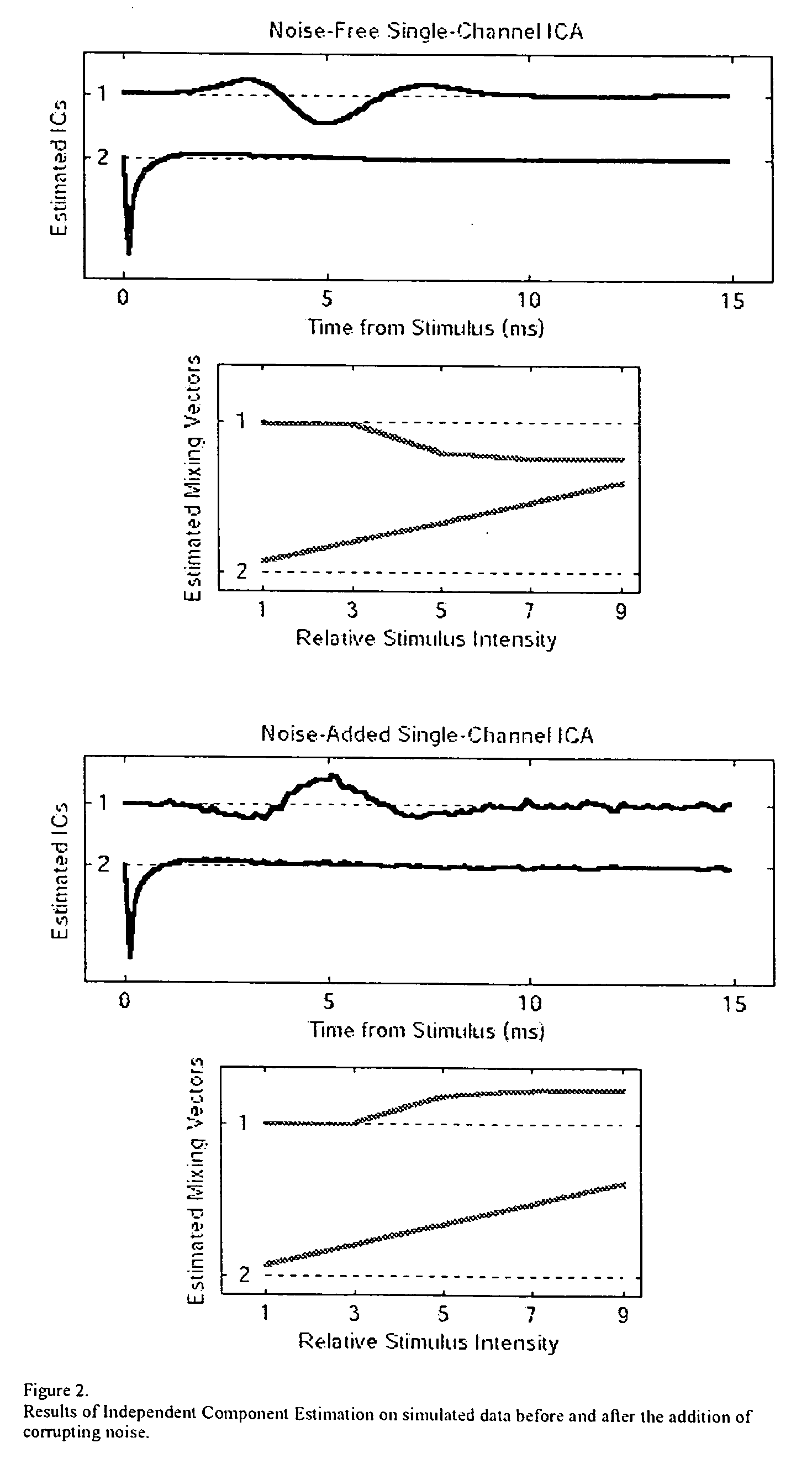Method and apparatus for identifying constituent signal components from a plurality of evoked physiological composite signals
a composite signal and signal component technology, applied in the field of medical equipment and methods, can solve the problems that the linear mixture model of ica is not suitable for spatially separated peripheral compound muscles and sensory nerve action potentials, and achieves the effect of improving diagnostic indices and improving the accuracy of electrodiagnostic parameter estimation
- Summary
- Abstract
- Description
- Claims
- Application Information
AI Technical Summary
Benefits of technology
Problems solved by technology
Method used
Image
Examples
example
[0051] The preferred embodiment of the present invention provides for the estimation of constituent components of multiple, electrically evoked, peripheral sensory nerve signals. FIG. 5 illustrates this embodiment. A variable electric current source 100 is connected to a pair of skin surface stimulation electrodes 101 in such a way that pulsed electrical current stimuli can be delivered to a human subject's median nerve 102 through the surface of the subject's arm 103. Multiple stimuli, of different stimulus magnitudes, are delivered to the nerve. Each stimulus evokes a compound nerve action potential that travels distally along the median nerve toward the subject's finger 105. Evoked compound nerve potentials activated in this manner consist of a combination of individual action potentials from multiple nerve fiber sub-populations, each having their own unique bioelectrical characteristics. Varying the magnitude of stimulation results in evoked compound potentials consisting of dif...
PUM
 Login to View More
Login to View More Abstract
Description
Claims
Application Information
 Login to View More
Login to View More - R&D
- Intellectual Property
- Life Sciences
- Materials
- Tech Scout
- Unparalleled Data Quality
- Higher Quality Content
- 60% Fewer Hallucinations
Browse by: Latest US Patents, China's latest patents, Technical Efficacy Thesaurus, Application Domain, Technology Topic, Popular Technical Reports.
© 2025 PatSnap. All rights reserved.Legal|Privacy policy|Modern Slavery Act Transparency Statement|Sitemap|About US| Contact US: help@patsnap.com



